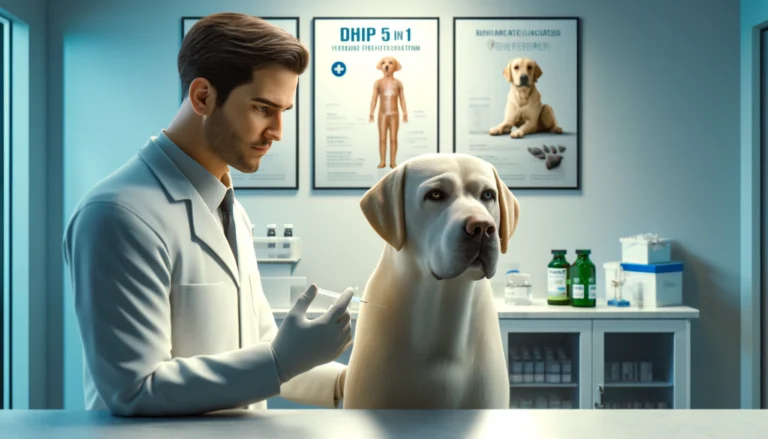nausea in dogs

Nausea in dogs is a common but often overlooked issue, and while it can be temporary, it can also be indicative of an underlying health problem. Dogs, unlike humans, cannot easily communicate their discomfort, so recognizing the subtle signs of nausea is essential for responsible pet ownership. This guide will cover everything you need to know about nausea in dogs, from causes and symptoms to diagnosis, treatment options, and preventive measures.
What Is Nausea in Dogs?
Nausea, in simple terms, refers to the unpleasant sensation that leads to the urge to vomit. While vomiting is often the most visible sign of nausea, it is not always the direct result. In dogs, nausea is often accompanied by other symptoms such as drooling, lip licking, and an overall feeling of discomfort.

When a dog feels nauseous, their gastrointestinal system is affected, causing discomfort in the stomach and sometimes even throughout the entire digestive tract. Nausea can happen for many reasons, from mild to severe, and the symptoms can manifest in different ways. While it might be a short-term condition caused by minor issues like overeating, nausea can also point to more serious underlying health concerns.
How Nausea Differs from Vomiting
It’s essential to differentiate between nausea and vomiting. Nausea is the feeling of discomfort that can often precede vomiting but may not always result in it. Vomiting is the physical act of expelling stomach contents, and it can happen independently of nausea. For example, a dog might experience nausea without vomiting, but eventually, the discomfort may lead to vomiting.
In contrast, vomiting is a more intense physical symptom, and while it is often triggered by nausea, it can also occur due to other factors like food or toxin ingestion, infections, or illness.
Common Causes of Nausea in Dogs
Nausea in dogs is a symptom of an underlying issue rather than a condition in itself. The cause of nausea can range from something as simple as dietary changes to more severe problems like liver disease or cancer. Below is a more detailed exploration of the most common causes of nausea in dogs.
Dietary Issues
Overeating or Eating Too Quickly
Dogs that eat too much too quickly are more likely to develop bloating or a condition known as gastric dilation volvulus (GDV). In these cases, the stomach distends and can rotate, leading to a blockage and significant discomfort. GDV can be a life-threatening emergency, and nausea is often one of the earliest signs. The stomach’s inability to handle the large volume of food can trigger nausea and vomiting.
Dogs that gobble their food at lightning speed also tend to swallow air (a phenomenon called aerophagia), which leads to a buildup of air in the stomach. This not only leads to nausea but can also result in abdominal distension and pain.
Food Intolerance or Allergies
Food allergies in dogs often manifest as gastrointestinal distress, including nausea, vomiting, and diarrhea. Common allergens in dog food include proteins like beef, chicken, or lamb, grains such as wheat, or dairy products. Dogs may develop allergies to ingredients they were previously able to tolerate, making it essential to monitor changes in behavior and appetite.
For example, some dogs develop lactose intolerance as they age, meaning they can no longer digest milk or dairy products properly. The body’s inability to process lactose leads to nausea, cramps, and diarrhea. If you notice your dog experiencing discomfort after consuming dairy, it could be a sign of intolerance.
Spoiled or Toxic Foods
Certain foods that are safe for humans can be toxic to dogs, causing nausea as well as more severe symptoms. Common foods that are toxic to dogs include:
- Chocolate: Contains theobromine, a stimulant that can cause nausea, vomiting, and, in extreme cases, seizures.
- Grapes and raisins: These can cause kidney failure in dogs, with nausea being one of the first symptoms.
- Onions and garlic: Both can lead to a condition called hemolytic anemia, which is characterized by vomiting and nausea.
- Macadamia nuts: Known to cause lethargy, vomiting, and tremors in dogs.
Sudden Diet Changes
If you abruptly switch your dog’s food, their digestive system may struggle to adapt to the new ingredients. This can cause nausea, vomiting, and diarrhea, especially if the new food has different protein sources or fat content. Gradually transitioning between food types over 7–10 days allows the dog’s stomach to adjust and reduces the risk of nausea.
Gastrointestinal Disorders
Gastritis
Gastritis is inflammation of the stomach lining. It can be caused by various factors, including the ingestion of spoiled food, toxins, or stress. The inflammation results in discomfort, and as a consequence, the dog experiences nausea and vomiting. In some cases, the condition might resolve on its own, but if untreated, it can lead to more severe gastrointestinal problems like ulcers or bleeding.
Gastroenteritis
Gastroenteritis, which refers to the inflammation of both the stomach and intestines, is often caused by infections from bacteria, viruses, or parasites. The infection can lead to vomiting, diarrhea, dehydration, and a loss of appetite. Dogs with gastroenteritis often show additional symptoms such as lethargy, fever, and abdominal pain. This condition is contagious among animals, so it’s essential to isolate your dog and follow proper hygiene procedures.
Pancreatitis
Pancreatitis is a serious and sometimes fatal condition in which the pancreas becomes inflamed. The pancreas is responsible for producing enzymes that aid digestion. When inflamed, these enzymes can attack the pancreas itself, causing severe nausea, vomiting, and abdominal pain. Pancreatitis in dogs is often triggered by a fatty meal, particularly in breeds that are predisposed to this condition, such as Miniature Schnauzers, Yorkshire Terriers, and Poodles.
Inflammatory Bowel Disease (IBD)
IBD is a chronic condition where the intestines become inflamed, affecting nutrient absorption. Dogs with IBD often experience nausea, vomiting, diarrhea, and weight loss. This condition is typically managed through dietary changes, medications like corticosteroids, and sometimes antibiotics to control inflammation.
Infections and Toxins
Bacterial or Viral Infections
Dogs can contract infections that directly affect their gastrointestinal system, resulting in nausea. For instance, parvovirus is a viral infection that targets rapidly dividing cells in the intestinal lining, leading to severe vomiting, diarrhea, and dehydration. Infected dogs may also have a fever, lethargy, and loss of appetite. Leptospirosis, another bacterial infection, can lead to nausea, vomiting, liver damage, and kidney failure if left untreated.
Tips
Can your dog handle the spicy temptation of pepperoni, or is it a dangerous snack lurking in your fridge? Find out if this popular treat is a friend or foe for your furry friend!”
Toxin Exposure
If a dog consumes or inhales a toxic substance, they may develop nausea and vomiting as the body attempts to expel the toxin. Common household toxins include cleaners, pesticides, and certain plants, such as azaleas or oleander, which can cause nausea, vomiting, and other symptoms. Immediate veterinary intervention is crucial to prevent further damage and treat the poisoning.
Organ Dysfunction
Liver Disease
The liver plays a critical role in detoxifying the body and aiding in digestion. Liver disease, whether caused by infections, toxins, or genetic conditions, can lead to nausea, vomiting, and jaundice. Symptoms can also include lethargy, weight loss, and a lack of appetite. Hepatitis (inflammation of the liver) and liver failure are severe conditions that require prompt treatment.
Kidney Disease
The kidneys filter toxins from the bloodstream, and when they fail, these toxins build up in the body, leading to nausea, vomiting, and lethargy. Chronic kidney disease (CKD) is common in older dogs and can progress slowly over time. Dogs with CKD may also experience increased thirst, urination, and weight loss. Treatment focuses on managing symptoms and slowing the disease progression through diet, medication, and hydration therapy.
Motion Sickness
Some dogs are prone to motion sickness, especially when traveling in a car. Just like humans, dogs may feel nauseous due to the motion and the disturbance of their inner ear. Symptoms of motion sickness include drooling, excessive panting, and vomiting, often occurring at the start of a trip or after an extended period in the car. Puppies and young dogs are more likely to experience motion sickness, although older dogs can also be affected.
Pain or Stress
Pain from injuries, inflammation, or conditions like arthritis can cause nausea in dogs. The discomfort from pain may disrupt normal digestion, leading to nausea and even vomiting. Similarly, stress can trigger physiological reactions in dogs, including nausea. Situations such as long car trips, trips to the vet, separation from their owners, or changes in their environment can all cause stress, resulting in digestive issues like nausea.
Medications
Certain medications can have nausea as a side effect. Antibiotics, anti-inflammatories, and even chemotherapy drugs can irritate the stomach lining, leading to nausea and vomiting. If your dog is on a new medication and begins showing signs of nausea, consult your vet for advice. Sometimes, a change in the medication or an adjustment in the dosage may be necessary.
Cancer
Cancer, particularly when it affects the digestive system, liver, or brain, can cause nausea in dogs. Tumors can obstruct normal digestive processes, leading to nausea, vomiting, and loss of appetite. Cancer-related nausea is often accompanied by other symptoms such as weight loss, lethargy, and changes in behavior. Early diagnosis is key in managing cancer, so if nausea persists along with other warning signs, a visit to the vet is crucial.
A summary of Common Causes of Nausea in Dogs
| Cause of Nausea | Treatment Options | Duration of Treatment | Prognosis |
|---|
| Gastrointestinal Issues | Bland diet (boiled chicken & rice), probiotics, anti-nausea medication | Short to medium-term | Excellent with early treatment. |
| Toxins or Poisoning | Induced vomiting, activated charcoal, IV fluids | Immediate to short-term | Good if treated early, variable recovery. |
| Motion Sickness | Anti-nausea medication (Cerenia), ginger, calming aids | Short-term (during travel) | Generally resolves with treatment. |
| Pancreatitis | Pain management, low-fat diet, IV fluids | Long-term management | Good with proper diet and care. |
| Infections | Antibiotics (bacterial), antivirals (viral), fluids | Medium to long-term | Excellent with timely treatment. |
| Cancer | Surgery, chemotherapy, pain management | Long-term | Depends on cancer stage and type. |
| Kidney or Liver Disease | Medications for organ support, special diet, IV fluids | Long-term | Variable, depends on condition severity. |
Recognizing the Signs of Nausea in Dogs
Identifying nausea in dogs is challenging because dogs cannot verbally express their discomfort. Therefore, careful observation of your dog’s behavior is essential. The following sections dive deeper into specific symptoms you might notice:
Drooling and Excessive Salivation
Dogs that feel nauseous often produce excess saliva, which can result in drooling. If your dog is drooling more than usual, especially if they have no visible reason for it (like food or a treat), this could be a sign of nausea. Some dogs may also appear to have a foamy mouth, which can occur when the dog attempts to swallow excess saliva. This symptom is particularly common when dogs are suffering from motion sickness, gastrointestinal issues, or toxicity.
Lip Licking and Swallowing
If your dog is continuously licking their lips or swallowing, they may be feeling nauseous. Dogs may do this in an attempt to relieve the uncomfortable sensation in their stomach or to alleviate a bitter taste in their mouth. Lip licking is especially noticeable when it occurs in combination with other symptoms, such as drooling, vomiting, or loss of appetite.
Loss of Appetite
Loss of appetite, or anorexia, is one of the most common signs that your dog may be feeling nauseous. If your dog turns away from their food or only nibbles at their meals, it’s a strong indicator that something is amiss with their digestive system. Dogs may also refuse treats, which they normally find irresistible, if they are feeling nauseous. While a temporary reduction in appetite is normal from time to time, a consistent loss of appetite can signal nausea or an underlying health issue.
Vomiting and Diarrhea
Vomiting is often one of the most visible signs that a dog is experiencing nausea. While vomiting can result from various causes, if it occurs repeatedly or is accompanied by other symptoms such as lethargy or abdominal discomfort, it may indicate a more serious issue. Dogs may vomit undigested food, bile, or mucus, depending on the underlying cause of nausea.
Similarly, diarrhea often accompanies nausea, particularly in cases of gastrointestinal infections, food poisoning, or allergies. The two symptoms together suggest that the digestive system is under stress.
Restlessness and Pacing
Nauseous dogs may appear more restless than usual. They might pace back and forth, unable to settle, and seem generally anxious. This restlessness can be due to the discomfort they feel, similar to how humans may toss and turn when feeling nauseous. If you notice that your dog is pacing more than usual or seems agitated, it could indicate that they are struggling with nausea.
Hunched Posture and Abdominal Discomfort
One of the most obvious signs of nausea is a change in posture. Dogs experiencing abdominal pain or discomfort due to nausea may adopt a hunched posture, keeping their body low to the ground and their head pointed down. This posture is often accompanied by additional signs of discomfort, such as whining or whimpering.
A dog may also avoid certain movements or actions, such as jumping or climbing stairs, because the discomfort exacerbates when they move. A hunched posture may also indicate other conditions like pancreatitis, gastritis, or abdominal injury, so it’s important to monitor your dog closely for other symptoms.
Gurgling or Bloating Sounds
If you notice unusual gurgling or bloating sounds coming from your dog’s abdomen, this could indicate digestive upset. Gas build-up and bloating are common when the dog’s stomach is upset or when they are unable to digest food properly. This symptom may be accompanied by visible signs of discomfort, such as your dog repeatedly trying to lay down or stretching to alleviate the pressure.
Diagnosing Nausea in Dogs
Diagnosing nausea in dogs requires a comprehensive approach. The vet will need to perform a thorough physical examination and may recommend a range of diagnostic tests to identify the underlying cause of nausea.
Physical Exam
The vet will begin by carefully examining your dog for any signs of pain, bloating, or discomfort. They may palpate the stomach area to check for tenderness, masses, or abnormalities. This will help the vet determine if the nausea is related to gastrointestinal issues, such as an infection or obstruction.
Blood Tests
Blood tests are one of the most common methods for diagnosing health issues in dogs. These tests can reveal signs of infection, liver or kidney damage, or electrolyte imbalances, which are common causes of nausea. For example, elevated liver enzymes can indicate liver disease, while elevated white blood cells could point to an infection.
Urine Tests
Urine tests are often performed alongside blood tests to assess kidney function, detect infections, and monitor dehydration. Dehydration from vomiting or diarrhea can exacerbate nausea, so identifying it early is essential for effective treatment.
Imaging: X-rays and Ultrasound
Imaging tests like X-rays or ultrasound are used to assess the dog’s internal organs, including the stomach, intestines, liver, and kidneys. These tests are particularly helpful in identifying issues like tumors, blockages, foreign objects, or other structural problems that could lead to nausea.
Fecal Analysis
A fecal analysis is essential if gastrointestinal parasites are suspected. Common parasites like roundworms or hookworms can cause vomiting, diarrhea, and nausea. A stool sample is examined under a microscope to check for eggs, larvae, or bacteria that might be contributing to the symptoms.
Endoscopy
In some cases, an endoscopy may be performed to visually examine the gastrointestinal tract. This is especially useful when there’s a suspicion of foreign object ingestion, ulcers, or cancer. A tiny camera is inserted through the mouth into the stomach, allowing the vet to see any abnormalities up close.
Treating Nausea in Dogs
Treatment for nausea in dogs largely depends on the underlying cause. Your vet will recommend a specific treatment plan based on the diagnosis, but here are some common approaches:
Dietary Management
Dietary management is often one of the first steps in treating nausea. A bland diet of easily digestible foods can help soothe an upset stomach. Common options include boiled chicken (no skin or bones) and white rice. This simple diet is gentle on the stomach and can provide some relief from nausea.
If your dog’s nausea is due to food allergies or intolerance, a more specialized diet may be required. Your vet may suggest an elimination diet, which involves removing potential allergens and gradually reintroducing them to identify the source of discomfort.
Anti-nausea Medications
Anti-nausea medications such as maropitant (Cerenia) or metoclopramide can help reduce nausea and vomiting. These medications work by blocking certain receptors in the brain that are involved in the vomiting reflex. Your vet may prescribe these medications for short-term relief or use them alongside other treatments, such as antibiotics or pain relief.
Hydration and Electrolytes
Dehydration can worsen nausea and vomiting, making it crucial to keep your dog hydrated. If your dog is unable to drink enough water on their own, your vet may administer fluids intravenously or through a subcutaneous injection to prevent dehydration and restore electrolyte balance.
Treating the Underlying Cause
Once the underlying cause of nausea is identified, the appropriate treatment will be initiated. For instance:
- Bacterial infections may require antibiotics.
- Pancreatitis may be managed with pain relief and dietary changes.
- Liver disease might require medication, dietary adjustments, and regular monitoring of liver function.
Pain Relief
If your dog is in pain due to a gastrointestinal condition, anti-inflammatory or pain-relieving medications can be helpful. NSAIDs (Non-Steroidal Anti-Inflammatory Drugs) such as carprofen are commonly prescribed to reduce inflammation and alleviate pain in conditions like pancreatitis or arthritis. However, caution must be exercised when using NSAIDs, as they can also cause stomach irritation and worsen nausea.
Preventing Nausea in Dogs: Proactive Measures
Preventing nausea in dogs starts with understanding the root causes and taking steps to reduce risks. While some causes, like infections or genetic conditions, may be difficult to avoid, others can be prevented with proper care and vigilance. Below are some proactive measures you can take to keep your dog from experiencing nausea:
Proper Diet and Feeding Routine
Establishing a consistent feeding routine and providing a balanced, high-quality diet are two key components in preventing gastrointestinal issues, including nausea. Avoid sudden changes in your dog’s food as this can disrupt their digestive system. If you need to transition to a new food, do so gradually over 7–10 days by mixing small amounts of the new food with the old food and gradually increasing the proportion of the new food.
To prevent overeating, consider the following tips:
- Divide meals into smaller portions: Instead of feeding your dog a large meal at once, try splitting it into two or three smaller portions throughout the day.
- Slow feeder bowls: These bowls are designed to slow down dogs that tend to eat too quickly. The design encourages them to take smaller bites and prevents them from swallowing large amounts of air, reducing the risk of bloating and nausea.
- Avoid table scraps: Human food can be too rich or too fatty for dogs, often leading to gastrointestinal upset.
Monitoring for Toxic Foods
Be vigilant about the foods that your dog consumes, as certain human foods are toxic to them. Keep a safe distance between your dog and common household foods that can cause nausea or even poisoning. Educate all family members about what foods are off-limits, including chocolate, grapes, raisins, onions, garlic, and certain nuts (e.g., macadamia nuts).
Ensure that any toxic substances (e.g., cleaners, pesticides) are stored in secure areas and out of your dog’s reach.
Control Stress and Anxiety
Stress can trigger nausea in dogs, just like it can in humans. Creating a calm, predictable environment for your dog can reduce the chances of stress-induced nausea. Here are some tips to manage stress:
- Routine: Dogs thrive on routine. Feeding, walks, and playtime should happen at roughly the same times every day to help your dog feel secure.
- Separation anxiety: If your dog experiences separation anxiety, try gradually desensitizing them to your absence by leaving for short periods and gradually increasing the time you are away.
- Traveling stress: For dogs prone to motion sickness, you can help them adjust by taking them on short car trips and gradually increasing the duration of the trips. You can also try using a crate or dog seatbelt to keep them calm and stable during travel.
- Calming products: There are a variety of calming aids available for dogs, including pheromone diffusers, anxiety wraps, and calming chews, which can help relieve anxiety and prevent nausea triggered by stress.
Regular Vet Check-ups
Regular veterinary check-ups are critical for maintaining your dog’s health and identifying any underlying conditions before they become more serious. During these visits, your vet can check for signs of illness, parasites, and potential issues with your dog’s digestive system. It is also an opportunity to discuss dietary changes, weight management, and preventive care like vaccinations and parasite control.
By staying proactive with your dog’s health care, you can detect potential problems early and prevent them from escalating into conditions that cause nausea.
Parasite Prevention
Parasites such as worms, Giardia, or other gastrointestinal bugs can cause nausea, vomiting, and diarrhea in dogs. Make sure your dog is on a regular deworming schedule and receives treatment for parasites as recommended by your vet. Keep your dog’s environment clean and prevent them from eating feces or drinking from contaminated water sources. Routine fecal tests are also recommended to check for the presence of parasites.
Hydration is Key
Dehydration can exacerbate nausea and make it more difficult for your dog to recover from any underlying illness. Make sure your dog always has access to fresh, clean water. During bouts of vomiting or diarrhea, it’s crucial to encourage your dog to drink small amounts of water frequently. Dehydration can worsen nausea and lead to more severe symptoms like lethargy and loss of appetite, so keeping your dog hydrated is an essential aspect of their overall care.
Administer Medications as Directed
If your dog is prone to nausea due to specific medical conditions (like chronic pancreatitis or kidney disease), your vet may prescribe medications to manage nausea or underlying health conditions. For example, anti-nausea medications like Cerenia (maropitant citrate) can help reduce nausea in dogs. Always follow the vet’s instructions regarding dosage and frequency. Never administer medications that are intended for humans unless explicitly directed by your vet.
When to See the Vet
While mild nausea in dogs may resolve on its own, persistent nausea or vomiting should always be evaluated by a veterinarian. If your dog shows any of the following signs, it’s time to consult a vet for a thorough examination and diagnosis:
- Ongoing nausea or vomiting: If your dog has been vomiting or showing signs of nausea for more than 24 hours, it’s important to get a professional opinion.
- Severe lethargy: If your dog is excessively tired, weak, or unresponsive to stimulation, it could indicate that they are severely dehydrated or suffering from a more serious condition.
- Loss of appetite for more than a day: A significant reduction in appetite, especially when accompanied by other symptoms, could be a sign of illness.
- Abdominal pain or bloating: If your dog appears to be in pain, particularly when their stomach is palpated or when they have a bloated abdomen, this could be a serious issue such as pancreatitis, GDV, or an obstruction.
- Blood in vomit or stool: Vomiting blood or passing bloody stool is a red flag for more serious health problems like gastrointestinal bleeding or poisoning.
- Dehydration: If your dog is drinking excessively, but not urinating, or if their gums are dry and sticky, dehydration could be a problem that needs immediate medical attention.
Conclusion: Keeping Your Dog Healthy and Happy
Nausea in dogs is a symptom that should never be ignored, as it can signal a variety of health problems. From simple dietary issues to serious conditions like organ failure or cancer, recognizing and addressing nausea early is key to ensuring your dog’s well-being. By understanding the causes, symptoms, and treatment options for nausea in dogs, you can better support your furry friend and keep them healthy and comfortable.
Prevention is equally important, and by establishing a consistent routine, providing a balanced diet, and regularly monitoring your dog’s health, you can reduce the risk of nausea and other gastrointestinal issues. Always consult your vet if you have concerns, as they can provide guidance on managing your dog’s specific needs and help prevent more serious conditions from developing.
Remember, your dog relies on you for their care and comfort, and knowing how to handle nausea and other health issues will strengthen the bond you share while ensuring they lead a long, healthy, and happy life.
How do you settle a dog’s nausea?
To settle a dog’s nausea, you can try offering bland foods like boiled chicken or rice in small amounts. Ensure they stay hydrated by offering water frequently. Sometimes, letting the dog rest in a quiet, comfortable area can help too. If nausea persists, it’s essential to consult a vet for appropriate medications or treatments.
How can you tell if a dog is nauseous?
Signs of nausea in dogs may include drooling, lip licking, excessive swallowing, loss of appetite, whining or pacing, and sometimes a hunched posture. They may also show discomfort by licking their lips or avoiding food.
How long can nausea last in dogs?
Nausea in dogs can last anywhere from a few hours to a couple of days, depending on the underlying cause. If symptoms persist longer than 24 hours or worsen, it’s crucial to consult a vet to rule out any serious conditions.
What causes nausea in dogs without vomiting?
Nausea in dogs without vomiting can be caused by various factors, including motion sickness, anxiety, dietary changes, infection, pancreatitis, liver or kidney disease, or gastrointestinal disorders. Stress and certain medications may also contribute to nausea without vomiting.
What is the best anti-nausea medicine for dogs?
The best anti-nausea medication for dogs is usually prescribed by a veterinarian. Common medications include maropitant (Cerenia), ondansetron, or metoclopramide. These medications help alleviate nausea and are safe for dogs when used under veterinary guidance.
What are the signs of nausea?
Signs of nausea in dogs typically include drooling, excessive swallowing, lip licking, a decrease in appetite, and behavioral changes such as restlessness or lethargy. They may also avoid food or show discomfort when trying to eat.






